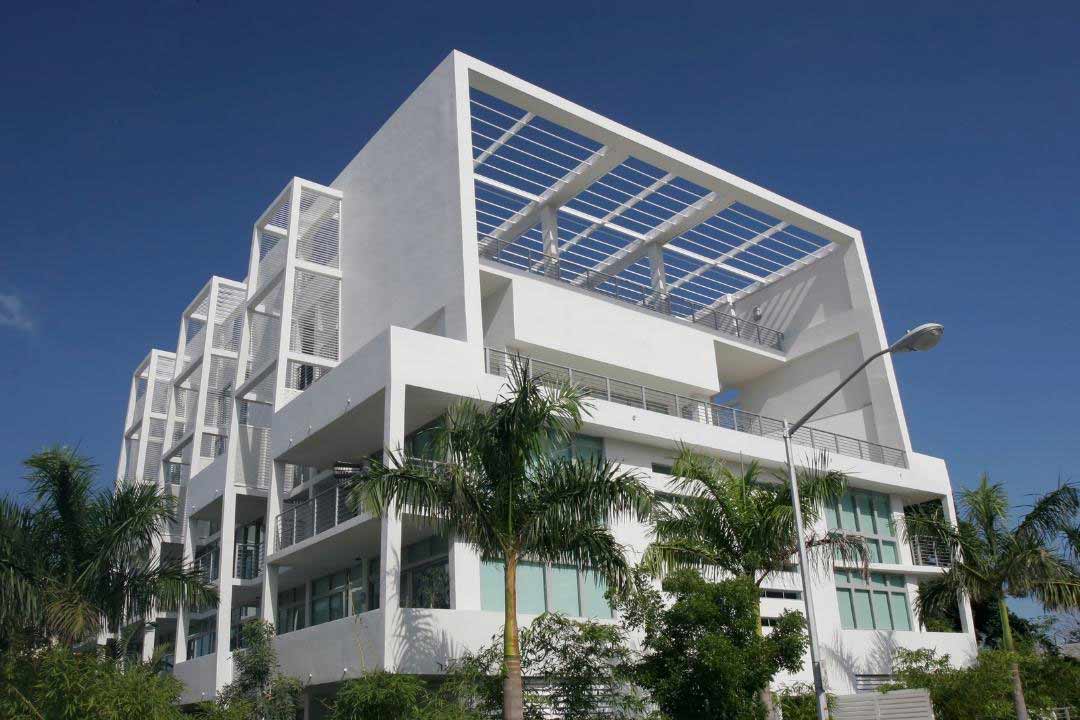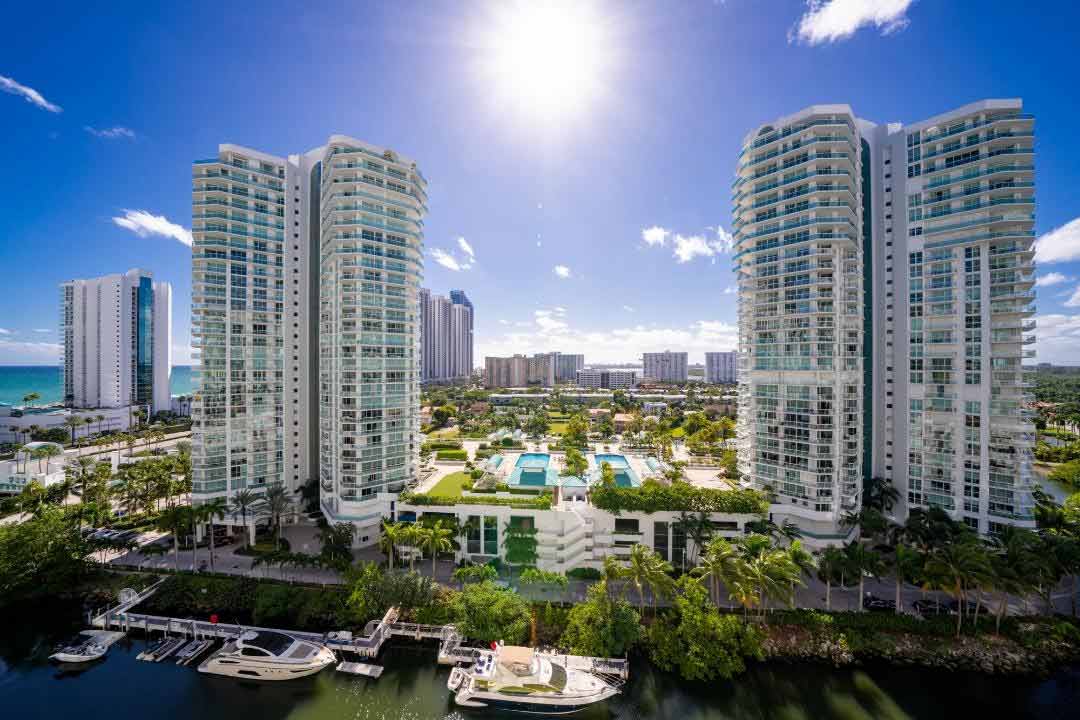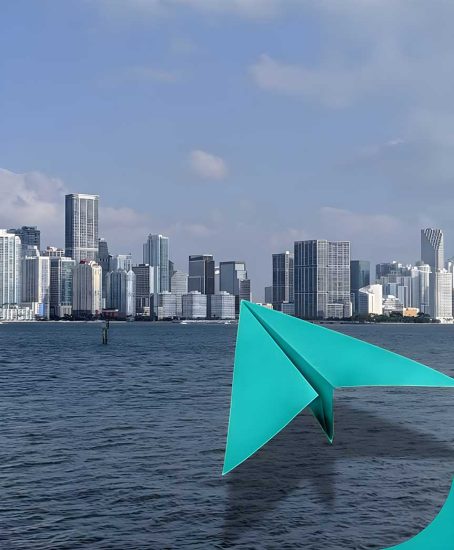A DSCR multifamily loan is a welcome financial tool for may investors. In the past, it was much tougher for smaller investors to get financed for a smaller apartment building or mixed-use building. Banks are willing to lend on 1–4-unit residential properties that qualify for conventional financing. And major property developers had their own sources of financing to buy or build large multi-family buildings.
But until recently, smaller landlords looking to buy, build, or refinance smaller multi-family buildings of between 5 and 10 units or so fell into a gray area: Loans on apartment buildings or developments with more than four units are categorized as commercial loans, not residential loans. And so these smaller apartment projects were too big for residential bank and conventional financing programs, but too small to attract the interest of commercial lenders and institutions.
Investors looking to buy or refinance a 5-10 unit apartment building, or a mixed-use building with some apartment dwellings and a retail, restaurant, or office unit, were not well served by traditional bank and institutional lenders.
Fortunately, that’s changing fast. Smaller, nimble, innovative lenders are recognizing the need, and rapidly rolling out creative lending solutions to serve the small apartment investor. As a result, today’s small multi-family and smaller commercial property investors now have access to a vibrant and competitive market of lenders who are eagerly looking to originate small balance commercial loans for multi-family and mixed-use properties.
What’s more, many of these loan programs don’t require borrowers to submit tax returns or undergo extensive and intrusive income verification or personal underwriting hassles. Instead, many small-balance commercial and multi-family lenders base their underwriting on the cash flows generated by the property itself, using a metric called debt service coverage ratio, or DSCR.
These financing sources tend to be non-bank lenders like debt funds, hedge funds, and private lenders, each of whom are willing to consider loans that “fly below the radar” of large bank and institutional lenders who prefer to lend millions of dollars at a time.
In contrast, lenders serving the small balance commercial loan niche target loans as small as $200,000, up to about $2.5 to $5 million and higher, provided the property can support it.
Small-balance DSCR lenders have long operated in straight commercial niches like restaurants, strip malls, and auto repair shops. But more recently, small-balance lenders have been opening their DSCR programs to small apartment buildings with five to eight units, and in some cases larger (e.g., up to 30 units), as well as to mixed-use properties.
These lenders have been very innovative, creating a variety of programs that address the most common issues borrowers face, and making these loans an affordable and realistic option for most borrowers.
The current boom in small-balance commercial lending is creating some terrific opportunities for small investors and those looking to acquire their first multi-family investment properties.
How DSCR loans work
The debt service coverage ratio measures a company’s net cash flow, after accounting for property expenses, insurance, and expected mortgage payments.
Because the lender is focused on the property, rather than the borrower, it’s possible to originate a DSCR loan without using the borrower’s tax returns or current personal or business income. Instead, lenders focus on verifying the gross rental income generated by the property itself and calculating expenses for maintenance, insurance, capital expenditures, taxes, and other outflows. The difference between these incoming and outgoing cash flows is called net operating income.
The debt service coverage ratio formula lenders use is Net Operating Income / Debt Obligations.
Advantages of small-balance DSCR programs
- No business or personal income tax documents required
- Available for purchases, rate-and-term refinances, and cash-out refinances
- More flexible on credit scores, credit history, etc. compared to other forms of financing
- No income verification hassles
- Streamlined underwriting and approval process
- Foreign buyers or foreign-sourced income not a problem
- Traditional commercial loans tend to be for shorter terms, with a balloon payment. Today’s small balance loans are available with longer loan terms, up to 25 to 30 years and more, in some instances.
- Interest-only payments available.
- Fast closings – sometimes within days of completed applications
- Up to 75 to 80% LTV for purchases and rate-and-term refinances, and up to 70 to 75% for cash-out refinances
- Short-term rental properties are eligible. (Here’s more on getting a mortgage for short-term rental properties.)
- Non-recourse financing available (usually on loans over $1 million)
- Accessible for first-time investors, as limited or no real estate investment experience required
Disadvantages
Small balance commercial programs do have one downside for certain borrowers: Since they are classified as commercial loans rather than residential loans, they tend to have higher down payment requirements (lower max LTVs) compared to residential properties.
If this is a concern for you, there are some great solutions available for 1-to-4 unit properties that qualify for our residential loan programs.
What does it take to get approved for a DSCR mortgage?
For small balance commercial loans like those you need to finance a small apartment building or mixed-use property, lenders want to see that the property is likely to generate a positive cash flow after the mortgage payment and other expenses. Most lenders look for a DSCR of 1.0 to 1.2x or better for apartment buildings. However, a few select lenders may consider DSCRs as low as 1.
Refinancing using a DSCR loan
The increased competition in the commercial small balance niche is creating opportunities for veteran landlords, as well: If you already have an existing commercial mortgage, you may now have more options available to refinance to get a lower interest rate, extend your term, lower your payments, or pay off existing debts.
You can also use a small-balance commercial DSCR loan to get cash out you can use to acquire new properties, take care of deferred maintenance, or execute your CAPEX plan.
Multi-family DSCR mortgage application checklist
Since DSCR loan programs are based on the net cash flow produced by the property, you’ll need some information from the current owners, which may include the following:
- A current rent roll
- Up to two years of monthly profit and loss statements
- Gross rent
- Verification of title/deed
- Zoning letter (if available)
- Property expenses
- All existing service contracts (lawn service, janitorial, pool maintenance, etc.)
- Existing commercial leases
- Laundry lease, if applicable
- ALTA survey
- CAPEX summary
- Stabilized budget report
- Sketch or floor plan of typical units
- Unit mix
- Property age
- Construction type
- Plot plan or survey
- Proof of building code compliance
- Insurance costs
- Designation of counsel
- Designation of insurance agent
Additionally, you’ll need to provide some information of your own:
- Documentation of borrower liquidity (usually about 10% of the loan amount)
- Property photographs
- Termite inspection report
- Property management company information (can be the existing management firm or you can hire a new one
- Articles of organization for your corporation or LLC
- Executed operating agreement
- EIN verification
For a DSCR loan, you won’t need to provide tax returns. Though some borrowers with high income, strong credit profiles, and low debt may benefit from including that information. A DSCR loan is an excellent solution for borrowers who don’t have or don’t want to submit tax returns. Since the loan is based on the free cash flow/EBITDA of the property itself, your own personal income taxes aren’t an issue with DSCR loans.
Property management considerations
Some small apartment building or mixed-used property owners manage their properties themselves. However, if you’re not an experienced real estate investor, the lender may require you to have an experienced property management firm on board prior to funding.
If you aren’t self-managing, your lender may ask for the following information from your property management company:
- Roster of current properties managed
- Executed management agreement
- Marketing materials and/or plan
- Sample lease contract
- Documentation/explanation of any expenses shared with other properties
- Payroll analysis
Conclusion
The influx of lenders competing to lend on smaller apartment and mixed-use commercial property types means it’s easier than ever for multi-family investors to purchase or refinance their 5-to-8-unit properties.
At DAK Mortgage, we specialize in finding lending solutions for investors in these historically difficult-to-finance properties. Contact us today to discuss your goals and situation, and we’ll work hard to match you with the best lender possible, with the right loan program to help you meet your real estate investment objectives.









